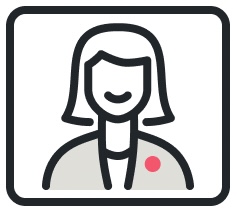- Community
- Topics
- Community
- :
- Discussions
- :
- Taxes
- :
- Retirement
- :
- Rollover IRA Combined with Taxed Contribution
- Mark as New
- Bookmark
- Subscribe
- Subscribe to RSS Feed
- Permalink
- Report Inappropriate Content
Rollover IRA Combined with Taxed Contribution
Hello:
I have a question about how I can go about differentiating the taxed contribution I made to my rollover IRA from the untaxed contribution. I left my employer and wanted to continue making payment to my retirement on my own from my bank account, unfortunately, I combined already taxed money with untaxed money. How do I go about paying the tax on the untaxed portion without double taxing on the contribution I made from my bank account? I would like to pay the tax on the IRA that is untaxed and place the money into a ROTH. Please help me with how to go about differentiating my personal contribution and previous untaxed contribution.

Do you have an Intuit account?
You'll need to sign in or create an account to connect with an expert.
Accepted Solutions
- Mark as New
- Bookmark
- Subscribe
- Subscribe to RSS Feed
- Permalink
- Report Inappropriate Content
Rollover IRA Combined with Taxed Contribution
Every year that you made a contribution to an IRA with your own money, you either claimed a tax deduction on your tax return, or you did not. If you claimed a tax deduction, then it is all pre-tax money and all taxable when you withdraw. If you made non-deductible contributions, you were supposed to report them on your tax return using form 8606. Every year that you make new non-deductible contributions, you get a new form 8606 with updated information on the amount of after-tax basis in the IRA. You need to save your form 8606s pretty much for as long as you live, or at least, you must always save the most recent form 8606, because that is how you prove your non-deductible contributions. The IRS does not keep track for you.
If you never generated any form 8606s, then you need to file amended tax returns for all prior years where you made non-deductible contributions, going in order from oldest to most recent (because each form builds on the previous year).
If you did file with form 8606, then you need to secure a copy of the most recent one--the form 8606 from the most recent year where you made non-deductible contributions should have the total of all non-deductible contributions, if you correctly reported all of them. If you did not save your tax forms you may be able to get a copy or electronic transcript here.
https://www.irs.gov/individuals/get-transcript
Then,
You can't convert only the after-tax money to a Roth. You have to use the pro rata rule, meaning the conversion is proportional. For example, suppose the after-tax contributions are $18,000, and the total balance (from earnings and pre-tax contributions at your employer) is $100,000. That means 18% of your account is after-tax. If you try to convert $18,000 to a Roth, the pro rata rule means that 18% of the conversion will be tax-free and 82% will be taxable. Then, your IRA will have a remaining balance of $82,000, of which $14,760 is your remaining after-tax basis. This is also tracked on form 8606, which you must keep indefinitely for use in the future when you take more conversions or withdrawals.
- Mark as New
- Bookmark
- Subscribe
- Subscribe to RSS Feed
- Permalink
- Report Inappropriate Content
Rollover IRA Combined with Taxed Contribution
Every year that you made a contribution to an IRA with your own money, you either claimed a tax deduction on your tax return, or you did not. If you claimed a tax deduction, then it is all pre-tax money and all taxable when you withdraw. If you made non-deductible contributions, you were supposed to report them on your tax return using form 8606. Every year that you make new non-deductible contributions, you get a new form 8606 with updated information on the amount of after-tax basis in the IRA. You need to save your form 8606s pretty much for as long as you live, or at least, you must always save the most recent form 8606, because that is how you prove your non-deductible contributions. The IRS does not keep track for you.
If you never generated any form 8606s, then you need to file amended tax returns for all prior years where you made non-deductible contributions, going in order from oldest to most recent (because each form builds on the previous year).
If you did file with form 8606, then you need to secure a copy of the most recent one--the form 8606 from the most recent year where you made non-deductible contributions should have the total of all non-deductible contributions, if you correctly reported all of them. If you did not save your tax forms you may be able to get a copy or electronic transcript here.
https://www.irs.gov/individuals/get-transcript
Then,
You can't convert only the after-tax money to a Roth. You have to use the pro rata rule, meaning the conversion is proportional. For example, suppose the after-tax contributions are $18,000, and the total balance (from earnings and pre-tax contributions at your employer) is $100,000. That means 18% of your account is after-tax. If you try to convert $18,000 to a Roth, the pro rata rule means that 18% of the conversion will be tax-free and 82% will be taxable. Then, your IRA will have a remaining balance of $82,000, of which $14,760 is your remaining after-tax basis. This is also tracked on form 8606, which you must keep indefinitely for use in the future when you take more conversions or withdrawals.
- Mark as New
- Bookmark
- Subscribe
- Subscribe to RSS Feed
- Permalink
- Report Inappropriate Content
Rollover IRA Combined with Taxed Contribution
Thank you!
Still have questions?
Questions are answered within a few hours on average.
Post a Question*Must create login to post
Unlock tailored help options in your account.
Get more help
Ask questions and learn more about your taxes and finances.
Related Content

mailsaurin
New Member

tcondon21
Returning Member

user17522081783
New Member

danilol
Level 4

alien1676
New Member

